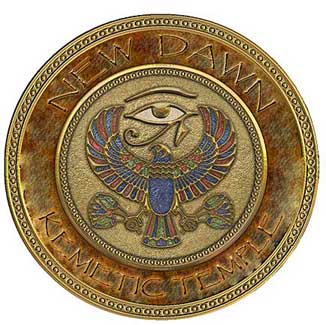|
|
|


~Jimmy Dunn~
There are approximately twenty minor temples at Karnak. Some
of these must escape our immediate attention, but we will nevertheless highlight
one of the smaller temples. Near the northeast corner of the enclosure wall
of the Temple of Amun at Karnak in Luxor (ancient Thebes), is a small temple
dedicated to Osiris Hek-Djet (Heqadjet, "Ruler of Eternity"). In his
book, the Complete Temples of Ancient Egypt, Egyptologist Richard H. Wilkinson
attributes this crumbling temple to the 22nd Dynasty reign of Osorkon IV, though
judging from the scenes within the temple this seems somewhat problematic.
The 22nd Dynasty, of which Osorkon IV was the last ruler, is aptly called the
Libyan or Bubastite Dynasty, for they were the rulers of Egypt at this time,
operating out of the city of Bubastis in the eastern Nile Delta. However, more
often then not, they named their sons as the high priests of Thebes, and were
active in the city. Later came the Nubian kings, who would also provide some
of the decorations to this small temple. It should be noted that Egypt's 22nd
and 23rd Dynasties overlap.
This temple consisted of a small enclosure with a gate, within which was a columned courtyard followed by the temple itself, all of which is oriented generally north-south. On the front, exterior facade of the temple, left (east) of the entrance doorway, there are the cartouches of a Nubian king that have been hammered out, but whose Horus name identifies him as Shabaka. He is depicted receiving from the hands of Amun the harpagon and the sed-festival symbols suspended from the palm of the years. Here, we can see a typical depiction of a Nubian King, who wears two uraei topped by two crowns. Note the king's powerful neck and very distinctive hairstyle, along with the special form of the user necklace and counterweight at the back of the neck, along with the details of the belt and the front panel of the apron, all distinctive of Egypt's Nubian rulers.
Inside the temple, in the first, rectangular chamber on the east wall, the top register is the first of the divine worshipers, believed to represent Shepenwepet,, the daughter of Osorkon III of Egypt's 23rd Dynasty, who is presenting Ma'at to Amun and receiving the menat from Isis-Hathor. The 23rd Dynasty is a somewhat difficult period for historians. Osorkon III mentioned here actually ruled after Osorkon IV. Below Shepenwepet, Amenirdis, daughter of a Nubian, holds the Hathorian sistrum on her shoulder and receives in her left hand the three keys of life given to her by Amun. Her titles, inscribed above two cartouches, are Divine Worshiper and Divine Wife of Amun. In a column of text to the left of this depiction, we are told that, "The divine wife, Amenirdis, endowed with life, has made hek djet as a memorial to her father Osiris. Here, behind Amun, Mut holds in her hand an ankh symbol that is combined in a curious fashion with the symbols of the sed-festival.
On the southern wall of this same chamber left of the entry into the next room is depicted the seven Osirian doorways, all boxed within one another. To the right of these false doors are several scenes. Here, in the uppermost scene, Shepenwepet is being breast-fed by a Hathor-like deity with a curious hairstyle, and then embraced by Amun. To the left of this is a representation of the symbol of the nome of Abydos where the temple of Osiris is located.
On the lentil of the doorway leading into the next chamber, two kings are seated back-to-back on two thrones resting on a long pedestal, at the ends of which are two Nile personifications that link the Two Lands. Before the king on the left is the vulture god Nekhebet, who is on a basket and surmounts the symbolic flowers of the South that rise up from the head of the Nile personifications. On the right are the flowers of the North that support the serpent Wadjet.
In the Inner of this temple, on the east wall is a scene that may help to explain the two kings in the previous scene. The cartouches on this curious representation reveal that the two kings depicted here kneeling back to back bear two distinct names. On the left is Usermaatre Osorkon, who wears the white crown of the South. Amun is also pictured inscribing hi name on a fruit of a tree. On the right is Usermaatre Takelot, who wears the red crown of the north and it is this time Tum who carves his name. These individuals are probably none other than Osorkon III, the father of Shepenwepet, and Takelot III, who is most likely Osorkon III's son. We believe that Osorkon III ruled for fourteen years at Leontopolis while Sheshonq III was at Tanis. However, after the death of Sheshonq III, Osorkon III continued to reign in the central delta for another fifteen years. Osorkon III probably designated his son, Takelot as ruler of Hierakonpolis while he was also High Priest in the region. Around 765 BC, Takelot III is thought to have become a coregent with his father for the next six years prior to his father's death. Afterwards, he probably reigned for only a couple of more years.